
Here’s the transcript of our wonderful chat with Toni Mount last night. Thank you to all the members who attended as we learned a lot about ordinary Tudor folk and what they did with their time (a lot, it turns out!).
[Read More...]
Here’s the transcript of our wonderful chat with Toni Mount last night. Thank you to all the members who attended as we learned a lot about ordinary Tudor folk and what they did with their time (a lot, it turns out!).
[Read More...]
We’ve been working hard on making a physical copy of Tudor Life magazine available and here’s the latest news on this… Exciting!
[Read More...]
A lovely subject, I know! Yes, in today’s Claire Chats talk I’m discussing how the remains of the wealthier classes and royals were prepared for burial. I discuss the different types of embalming before moving on to the practice of heart and entrails burial. I also look at what we know from primary sources documents about how various Tudor royals were prepared for burial. You’ll find all the links and further reading recommendations below the video.
[Read More...]
On this day in history, 30th June 1541, Henry VIII and his fifth wife, Catherine Howard, set off on their royal progress to the North.
Royal progresses meant that the monarch and his consort to get out of London, away from the smell and disease of the summer months, and also show themselves to their people. This progress, though, had two other aims: for Henry to meet his nephew, King James V of Scotland, at York in September, and also “to emphasise the extent of his defeat of the Pilgrims [from the Pilgrimage of Grace] and the Percy interest, and to humiliate utterly all but the most clearly loyal elements”.
[Read More...]
Here’s the full edition of our giant 62-page 78-page July edition of Tudor Life Magazine. This month we are focusing on Tudor stately homes and palaces … a fascinating edition.
[Read More...]
Born around 1512 to a family of gentry status, Katherine was the oldest daughter of Sir Thomas Parr, a late fifteenth-century courtier and knight. Her mother was Maud Green, a close friend and lady in waiting to Henry VIII’s first wife, Katherine of Aragon. The Parrs were a substantial northern family, with Thomas Parr tracing his ancestry to Edward III. Parr was a well-respected man and enjoyed the patronage of the young Henry VIII, who in 1515 sent him to Newcastle to escort his sister, the Princess Margaret, on her month-long progress south to London. Reports suggest he was charming and gallant, with the princess finding him particularly desirable; he soon became a favourite at Henry’s court. Upon his death in 1517 he left portions of £400 (£140,000 in modern value) to his two daughters, with a considerable amount more remaining for his son William.
Without the presence of a male figure in what was a patriarchal period, Maud was dealt the challenging duty of raising her children while maintaining a presence at court. Throughout these challenges, Maud was successful; she managed her estates and finances accordingly, oversaw her children’s education and arranged suitable unions for them befitting their status and marriageability.
[Read More...]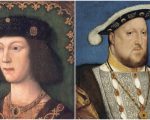
To celebrate the anniversary of Henry VIII’s birth on this day in history, 28th June 1491, I thought I’d give you some links to some talks, articles and resources on this iconic king. Happy 526th birthday to King Henry VIII.
[Read More...]
Thank you to Laurie for asking this Anne Boleyn question. Laurie’s full question was: “Regarding the birthdate of Anne, if it is 1507, as opposed to 1501, as many historians actually believe, this would make her only 6 years old when she is sent to the court of Margaret of Austria in 1513! As this is quite a bit younger than the average age when girls were sent to foreign courts, how is this explained?”
As I (Claire Ridgway) have been researching Anne’s life now for eight years, I figured that I could answer this one. However, I go with a 1501 birthdate for Anne Boleyn so, in the interests of being fair, I am also providing a link to an article written by Gareth Russell, who believes that Anne was born in 1507. Gareth and I agree on most things but we agree to disagree on that!
[Read More...]
We had a wonderful time in the chatroom on Friday discussing the Tudors on TV and in fiction. We covered the various depictions of the Tudors, discussed whether events had really happened, talked about which are the best movies and series, and also shared our book recommendations for Tudor novels. We covered so much in just an hour.
[Read More...]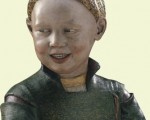
On this day in history…
26th June:
1513 – Burial of Sir Edmund Carew, landowner, administrator and soldier, in the church of St Nicholas, Calais, after he was shot dead during the siege of Thérouanne in Artois.
1535 – A new commission of oyer and terminer was appointed for the county of Middlesex. The commission ordered the Sheriff of Middlesex to gather the Grand Jury on the 28th June at Westminster Hall. This was to try Sir Thomas More who, according to the indictment, had been “traitorously attempting to deprive the King of his title of Supreme Head of the Church”.
1568 – Death of Thomas Young, Archbishop of York, at Sheffield. He was buried in York Minster.
1576 – Death of Edward Dering, scholar, Church of England clergyman and controversial evangelical preacher, from tuberculosis at Thobie Priory in Essex. A collection of his works, which included sermons, lectures, prayers and letters, was first published in 1590.
1596 – Burial of Sir John Wingfield in the cathedral at Cadiz, Spain. He was shot in the head in the attack on Cadiz on 21st June. At Wingfield’s funeral, “the generalls threw their handkerchiefs wet from their eyes into the grave” (Stow, 775) and the poet John Donne, who was a member of the expedition, composed an epigram as a tribute to Wingfield: “Farther then Wingefield, no man dares to go”.

On this day in history, 25th June 1533, Mary Tudor, Queen of France, sister of King Henry VIII and wife of Charles Brandon, Duke of Suffolk, died at her home of Westhorpe Hall in Suffolk.
Mary had been born on 18th March 1496 at Richmond Palace and was the youngest surviving child of King Henry VII and Elizabeth of York. She was renowned for her beauty, being described by the Venetian ambassador as “a Paradise – tall, slender, grey-eyed, possessing an extreme pallor”, and her motto was La volenté de Dieu me suffit (The will of God is sufficient for me). In 1507, Mary was betrothed to Charles of Castile (the future Charles V Holy Roman Emperor), and their wedding was planned for 1514. However, the betrothal was cancelled due to Henry VIII’s diplomatic dealings and, much to Mary’s horror, she was betrothed instead to the fifty-two-year-old King Louis XII of France, a man thirty-four years her senior, as part of Cardinal Wolsey’s peace treaty with France.
[Read More...]
As yesterday was the anniversary of the coronation of Henry VIII and Catherine of Aragon in 1509, we’re going to have some fun and exercise our brains with a Henry and Catherine-themed crossword – enjoy!
[Read More...]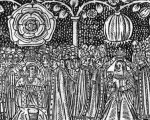
On this day in history, Sunday 24th June 1509, Midsummer’s Day and the Feast of St John the Baptist, King Henry VIII and his first wife, Catherine of Aragon, were crowned king and queen by William Warham, Archbishop of Canterbury, at Westminster Abbey.
You can read all about the coronation and coronation banquet in Edward Hall’s chronicle…
[Read More...]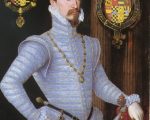
It used to be thought that Robert Dudley, fifth son of the thirteen children of John Dudley, Duke of Northumberland, and Jane Guildford, daughter of Sir Edward Guildford, was born on the same day as Queen Elizabeth I, i.e. 7th September 1533, but it is now believed that he was born on 24th June 1532 or 1533, with 1532 being the most likely.1
Robert received a humanist education and his tutors included the likes of John Dee, Thomas Wilson, Roger Ascham, and Robert’s uncle, Sir Francis Jobson, and he was brought up as a Protestant. He could write and speak Italian fluently, had knowledge of French and Latin, and had a keen interest in navigation, engineering and mathematics. He married Amy Robsart, his sweetheart, on the 4th June 1550 in the presence of King Edward VI.
In July 1553, on the death of Edward VI, Lady Jane Grey, wife of Robert’s brother, Guildford Dudley, became queen but her reign lasted just thirteen days because Mary I seized the throne. Guildford, Jane and Robert’s father, John Dudley, were later executed. Robert was imprisoned and condemned to death but was released in autumn 1554. He served the queen fighting in the Battle of St Quentin in August 1557.
[Read More...]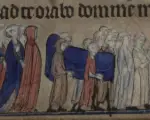
In today’s Claire Chats video talk, I start a two-part series on burial in Tudor times and discuss how the remains of a commoner were prepared for burial. It’s an interesting topic. Next week, I will talk about the deaths of wealthier people, with real examples from the records, and also the subjects of embalming and heart and entrails burial.
[Read More...]
Thomas Hood, the mathematician and physician, was baptised on this day in history, 23rd June 1556, at St Leonard Eastcheap. It was usual for children to be baptised within a few days of birth so he was also born in June 1556. His father was merchant taylor Thomas Hood.
Hood was educated at the Merchant Taylor’s School and then Trinity College, Cambridge, gaining his BA in c.1578 and his MA in 1581. In 1585, he was granted a licence to practise medicine by Cambridge University. In late 1588, he became Mathematical Lecturer to the City of London and he lectured on the subject until 1592. His biographer, H.K. Higton, writes of how “In the aftermath of the Spanish armada of 1588, concern for a greater knowledge of the mathematical sciences among military officers and naval commanders was voiced by members of the privy council” and that was the reason Hood was employed to lecture on mathematics.
[Read More...]
On either 22nd or 23rd June 1509, before his joint coronation with Queen Catherine of Aragon on 24th June, King Henry VIII created twenty-four Knights of the Bath at the Tower of London.
Letters and Papers names the knights as “Richard (sic) Radclyff lord Fitzwater, the lord Scroop of Bolton, the lord Fitzhugh, the lord Mountjoye, the lord Dawbeney, the lord Brooke, Sir Henry Clyfford, Sir Maurice Berkeley, Sir Thomas Knyvet, Sir Andrew Wyndesore, Sir Thomas Parr, Sir Thomas Boleyne, Sir Richard Wentworth, Sir Henry Owtrede, Sir Francis Cheyny, Sir Henry Wyotte, Sir George Hastynges, Sir Thomas Metham, Sir Thomas Bedyngfeld, Sir John Shelton, Sir Giles Alyngton, Sir John Trevanyon, Sir William Crowmer, Sir John Heydon, Sir Godarde Oxenbrige and Sir Henry Sacheverell.”
Who were these men?
[Read More...]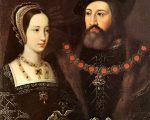
Thank you to Simon for asking the question “What is Mary Tudor holding in the portrait of her and Charles Brandon? Is it an artichoke?”. I knew just the right person to send this question to! I sent it to art historian and author, Roland Hui, who has actually written a very detailed article on this painting (link at bottom). Thank you Roland!
The object in Mary Tudor’s right hand is an artichoke, which interestingly enough is shaped like a royal orb. It is uncertain why Mary is pictured with one, but as artichokes were grown in the south of France, it may have been used to allude to her as France’s former Queen. As well, it might have been meant as a symbol of love and fecundity. Artichokes were said to be sacred to Venus/Aphrodite, the Classical goddess of love and beauty.
The staff emerging from the artichoke is a winged caduceus. This was the magical wand associated with the god Mercury/Hermes. There was an old legend that Mercury had come upon two battling snakes. To make peace between them, the god separated the two with a stick. The serpents then wrapped themselves around it. This uniting of opposites was a fitting representation of Mary Tudor and Charles Brandon’s marriage – the merger of ‘cloth of gold’ and ‘cloth of frieze’ as the couple were described in an inscription on the Yarnborough version of the painting. However, to make the caduceus (and the artichoke) appear less ‘pagan’, the wand is also in the form of a Christian tau-shaped cross.
[Read More...]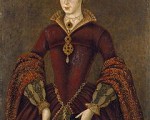
On 21st June 1553, letters patent were issued stating that King Edward VI’s heir was Lady Jane Grey, eldest daughter of the king’s cousin, Frances Brandon, Duchess of Suffolk.
Edward VI was dying, having been ill for a few months, and in the original draft of his “Devise for the Succession” he stipulated that the Crown would descend through the male heirs of Frances, Duchess of Suffolk, if Edward died childless. The problem was that there were no male heirs yet, so when Edward made a turn for the worse he decided to change the document to read: “To the Lady Fraunceses heirs males, if she have any such issue before my death to the Lady Jane and her heirs males.”
[Read More...]
Lettice Knollys was born on 8 November 1543 at Rotherfield Greys in Oxfordshire. She was the eldest of sixteen children born to Sir Francis Knollys and his wife, Katherine Carey. Lettice’s mother was the daughter of Mary Boleyn, meaning that Lettice was the great niece of Anne Boleyn. She was also a kinswoman of Elizabeth I. Francis and Katherine Knollys departed for the Continent in the mid-1550s to escape the religious persecution during Mary I’s reign, but it is possible that Lettice remained with Elizabeth Tudor at Hatfield. When Elizabeth came to the throne in 1558, Francis was appointed vice-chamberlain and Katherine, who was close to the queen, was appointed a lady of the bedchamber. Lettice, now in her teens, served as a gentlewoman of the privy chamber.
[Read More...]
Thank you to Ana for asking “Why did Henry VIII get so fat? Was he really obese because he ate too much? Or because he was ill?”. Here is Kyra Kramer’s answer:
Henry was a man of large appetites, in so many ways. Until he was in his late 30s, he was an Adonis and Olympic-level athlete, and he ate to match the calorific needs of his muscular, 6’2″ body. Like many athletes, he continued to eat this way even when middle age slowed down his metabolism, meaning that while he still rode and jousted as much as ever, he was getting a bit thick in the middle. We’ve all, I believe, seen this happen to formerly strapping men. They call it the “dad jeans” phase in America; when men start wearing jeans a little bigger, a little looser, and with a little more room in the backside. They are by no means obese, but they are no longer the ab-showing gods of their youth.
[Read More...]
If you’re like me, you drive your family and friends mad by shouting at the TV or muttering under your breath “well that didn’t really happen” when you’re watching a Tudor themed programme or movie, or you huff and puff your way through a Tudor novel. Is that you or do you have more patience?
Whatever your level of tolerance, I’d like to invite you to join me on the Tudor Society chatroom this Friday (23rd June) for a one-hour-long informal chat about the Tudors on TV and in fiction. This is your chance to rant and rave, or simply talk about a programme/movie you’ve just seen or a novel you’ve just read. Feel free to share recommendations too. It’s informal, I’ll just be there ‘moderating’ and making sure everything runs smoothly.
[Read More...]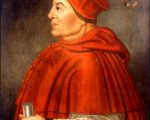
Thomas Wolsey was born between 1470 and 1473 in Ipswich, Suffolk. He was the son of Robert and Joan Wolsey. Robert owned a tavern in the parish of St. Mary at the Elms in Ipswich. Traditionally, Wolsey’s father has been identified as a butcher and cattle dealer. Thomas Wolsey’s humble origins proved a source of mirth to his critics during his long career. During his childhood and adolescence, Wolsey attended school in Ipswich and later studied at Magdalen College, Oxford, graduating with BA in 1486 when he was about fifteen years old. A decade later, he was ordained as a priest in the parish church of St. Peter in Marlborough. The year before, he graduated with MA. For a short period, Wolsey served as master of Magdalen School and, later, as dean of divinity.
[Read More...]
One of my favourite historians, Leanda de Lisle, has just shared details of two talks she’s doing, one at Bosworth Battlefield and one in Yorkshire. Here are the details:
[Read More...]
On this day in history, 19th July 1573, Blessed Thomas Woodhouse, former rector of a parish in Lincolnshire and private tutor, was hanged, drawn and quartered at Tyburn.
Woodhouse was apprehended on 14th May 1561 and taken to the Fleet Prison. He was received into the Society of Jesus, the Roman Catholic order of religious men founded by St. Ignatius of Loyola and known as Jesuits, while he was in prison.
On 19th November 1572, his twelfth year of imprisonment, Woodhouse wrote a letter to William Cecil, Lord Burghley, a letter which is said to have led to his martyrdom. Here is the text of the letter:
[Read More...]
On this day in history…
19th June:
1502 – The Treaty of Antwerp was signed between Henry VII and Emperor Maximilian I at Antwerp. Henry VII promised a payment of £10,000 for aid against the Turks in exchange for Maximilian’s promise to banish Yorkist rebels from his territories.
1535 – Sebastian Newdigate, William Exmew and Humphrey Middlemore, monks of the Carthusian Order of London Charterhouse, were hanged, drawn and quartered at Tyburn. Their crime: refusing to accept King Henry VIII as the Supreme Head of the Church. Click here for more information on the Carthusian Martyrs.
1566 – Birth of James VI and I, King of Scotland, England and Ireland, at Edinburgh Castle in Scotland. James was the only son of Mary, Queen of Scots, and Henry Stuart (Stewart), Lord Darnley. James became James VI of Scotland when his mother was forced to abdicate 24th July 1567, and he became James I of England on the death of Elizabeth I, 24th March 1603.
1573 – Execution of Thomas Woodhouse, Jesuit priest and martyr, at Tyburn. He was the first priest to be executed in Elizabeth I’s reign. Woodhouse was beatified in December 1886 by Pope Leo XIII.
1616 – Death of Henry Robinson, Bishop of Carlisle, at his home, Rose Castle in Carlisle. He died of the plague. Robinson was buried in Carlisle Cathedral.

Yes, it’s Sunday already! How time flies! Grab your favourite beverage and a yummy snack, get comfortable and have some fun with this little Tudor history quiz. It’ll get those brain cells working!
[Read More...]
On this day in history, 18th June 1558, the will of Robert Recorde, the Welsh mathematician, physician and mint administrator, was proved. His date of death is not known, but is thought to have been mid-June 1558.
Robert Recorde was born c.1512 and was the second son of Thomas Recorde of Tenby, Pembrokeshire, Wales, and his wife, Rose. Recorde graduated BA from Oxford in 1531 and, in the same year, became a fellow at All Souls College, Oxford. He is thought to have taught Mathematics before studying medicine at Cambridge, where he received his MD in 1545. He wroteThe Urinal of Physick, a urological treatise, and had it published by Reynolde Wolfe in 1547. He also wrote a book on anatomy.
[Read More...]
On this day in history, 17th June 1497, the Cornish Rebellion was brought to an end by the Battle of Blackheath, which is also known as the Battle of Deptford Bridge, when Henry VII’s forces were triumphant against the rebels.
[Read More...]
In today’s Claire Chats video, Claire talks about the cycles of mystery plays which were performed on the feast day of Corpus Christ in the medieval and Tudor periods.
[Read More...]